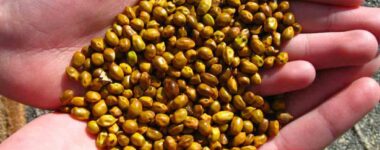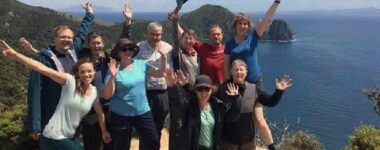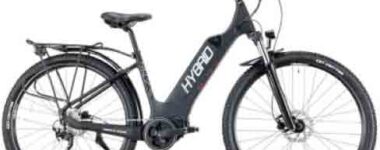Latest News
Share this post:
Whether you’re a regular outdoor photographer or just the occasional snapper, these top tips will help you improve your shots.
Use the light: Light is the key to all photography – whether you’re indoors or out. See how it hits your subject, and more importantly see where the shadows fall (cameras often don’t ‘see’ shadows the way our eyes do, placing much more emphasis on them). In scenes photographed with harsh shadows, cameras will often expose for either the brightest or the darkest parts, thus leaving the other parts with ‘blown out’ highlights or very black, featureless shadows. Bush pictures, particularly, can suffer from this. So…
Get up early, stay up late: This follows from the first point and it really is important for outdoor shooters. Learning to recognise ‘good’ light is vital for outdoor photography. Arguably the most important point to remember is that both early and late in the day sunlight comes through our atmosphere at a low angle. For outdoor shooters, the hour after sunrise and the hour before sunset generally offer the softest, most atmospheric light for the whole day. Try getting up before dawn, or hanging around with your camera from late afternoon until just after sunset. This soft, even light often presents outstanding photo opportunities for bushwalkers.
Shoot ‘verticals’: One of the easiest ways to change the impact of your images is to shoot occasional ‘verticals’ (or portrait). Instead of holding your camera with its longest axis horizontal, turn it 90 degrees – with the longest axis vertical – if you find the right subject. What are the ‘right’ subjects? Often, tall trees or cliff faces will look more dramatic if they’re framed vertically. Close-ups of people can be effective as well. Vertically framed shots add variety to your photo collection. Always consider them.
Fill your frame: When you are tramping this edict can be a real challenge. Often you’ll want to photograph wide panoramic scenes, so how do you fill the frame? The idea is to include everything you want in your frame, but to make sure you exclude everything you don’t want. If a particular tree impresses you, make sure it is the most prominent feature in your image. Move around (or zoom in) until it’s the main feature in your composition. If you’re shooting people, make sure all their faces are prominent. Remember that with distant subjects a telephoto zoom will allow you to get in ‘tight’ on your chosen subject matter.
Make ‘clean’ images: This can be one of the most challenging aspects of shooting pictures in the bush. Images will look stronger without any distracting elements in them. Often stray branches can poke in through the sides of frames or scraps of rubbish can appear in the foreground. You won’t notice them until after you’ve taken the picture. To avoid this run a visual check on your picture before pressing the shutter. Run your eye around each edge of the viewfinder , then across it, to see if anything is distracting. It takes only a moment, but it’s worthwhile.
Use the ‘rule of thirds’: This is a simple and effective compositional tool that has its origins in the artwork and designs of the ancient Greeks. Simply, divide your image frame into a ‘noughts and crosses’ grid and then try placing your main subject on either the lines or preferably the intersecting points of the lines. This is a simple but effective.
Understand depth of field: This is the area in front of and behind any given subject that is ‘sharp’, and it is adjusted through changes in aperture (a smaller aperture – eg. f/22 – leads to greater depth of field), the camera distance from the subject (the further away, the greater the depth of field), and the focal length of the lens. The longer the lens (eg. telephoto) the narrower the depth of field; the shorter the lens (wide angle) the deeper the depth of field. You can use these features any way you wish to create interesting effects in your pictures, but landscapes often work well with plenty of depth of field.
Be prepared when photographing wildlife: You’ll need lots of time and patience. The wilder the animal, the longer you’ll need, and even then you may find you’ve wasted your time when that deer bounds away as you lift your camera. Make sure your camera is ready to go from some distance way (switched on, card/film in place, telephoto lens zoomed in). Move in very slowly, stopping frequently. Stay low, brace your elbows, focus on its eyes, and hope!
Look front and back/up and down: Here are two very useful techniques. If you’re shooting with a lot of depth of field (f/16, f/22), make sure you have something of interest in the foreground of your scene, then the middle, and the background. This structure will help ‘lead’ the viewer’s eye through the scene. Also, look upwards (or from a high vantage point down) before shooting as there could always be something interesting to photograph, and if you have a small animal or plant consider shooting it from ground level. These differing perspectives can add real interest.
Use a polariser: A lot of filters have been replaced with digital software tricks, but not the polariser. It’s been designed to cut glare and intensify colours like greens and blues and it’s a very useful item in the bush or around water. Buy a circular polariser that will screw into the front of your lens. By rotating it you can see its effect through your viewfinder. While you’ll lose a fraction of light, a polariser can be invaluable in emphasising the colours in bush, sky and water on a bright sunny day.


 Collecting and Propagating Seeds
Collecting and Propagating Seeds China on a Plate: The Flavours of a Nation (with a Spotlight on Sichuan)
China on a Plate: The Flavours of a Nation (with a Spotlight on Sichuan) Kinesiology Cross Patches
Kinesiology Cross Patches Camaraderie On a Walking Tour…
Camaraderie On a Walking Tour… How E-Biking Has Transformed Biking Tours
How E-Biking Has Transformed Biking Tours








